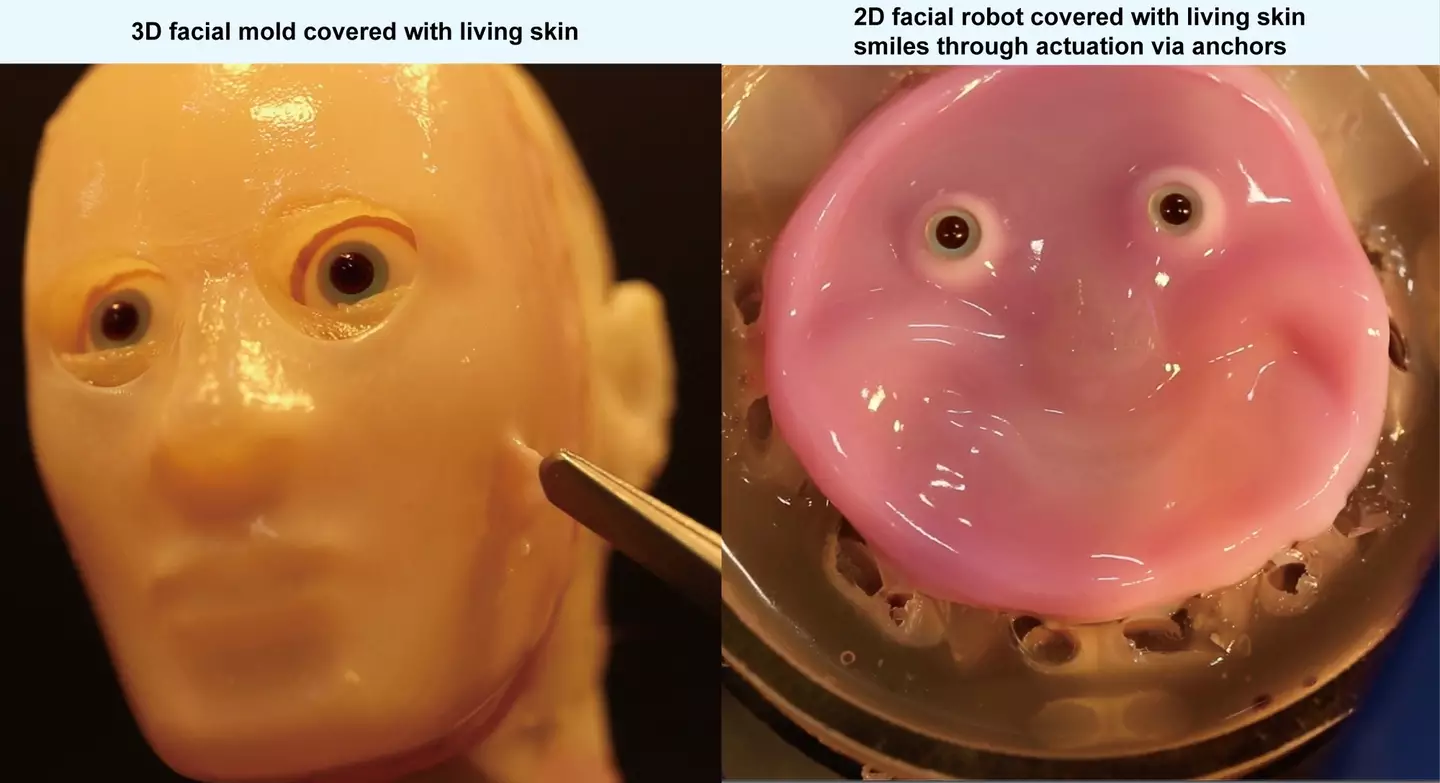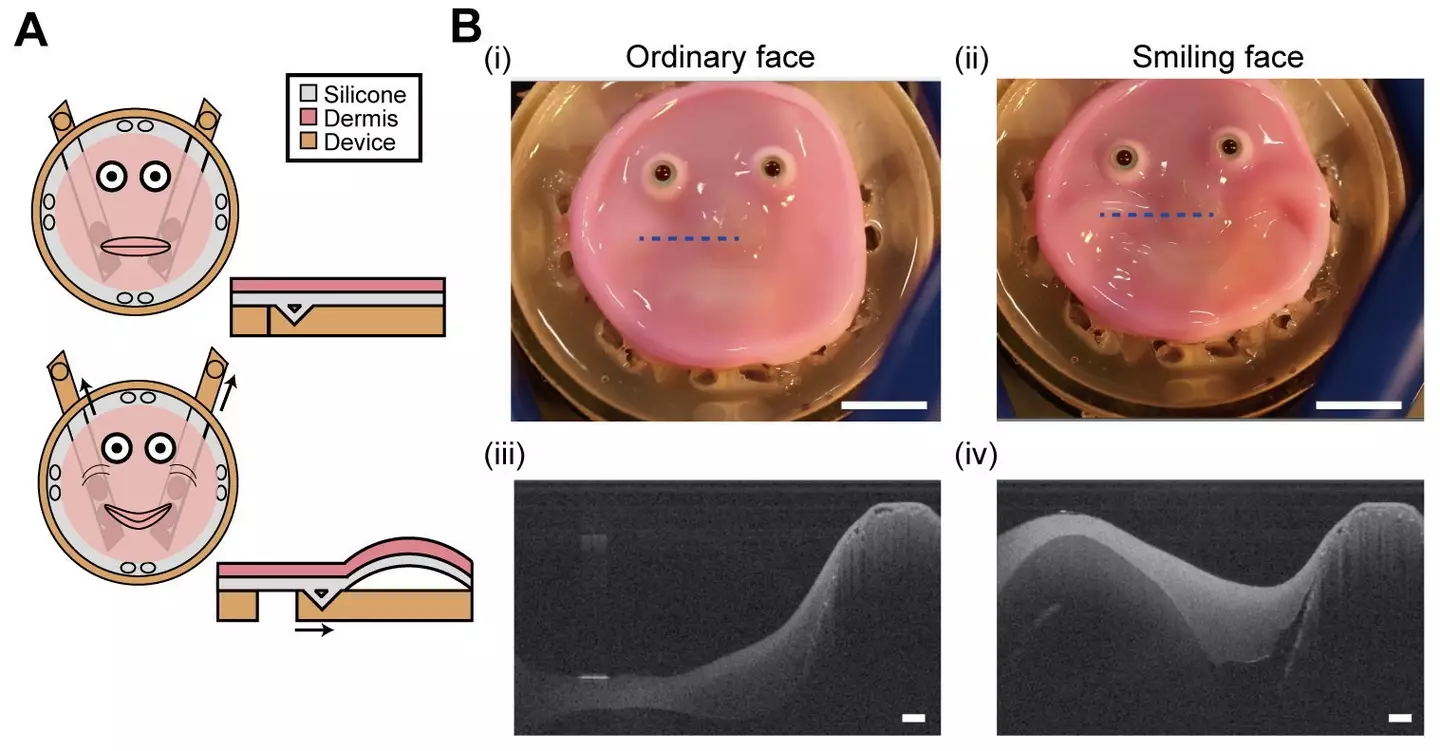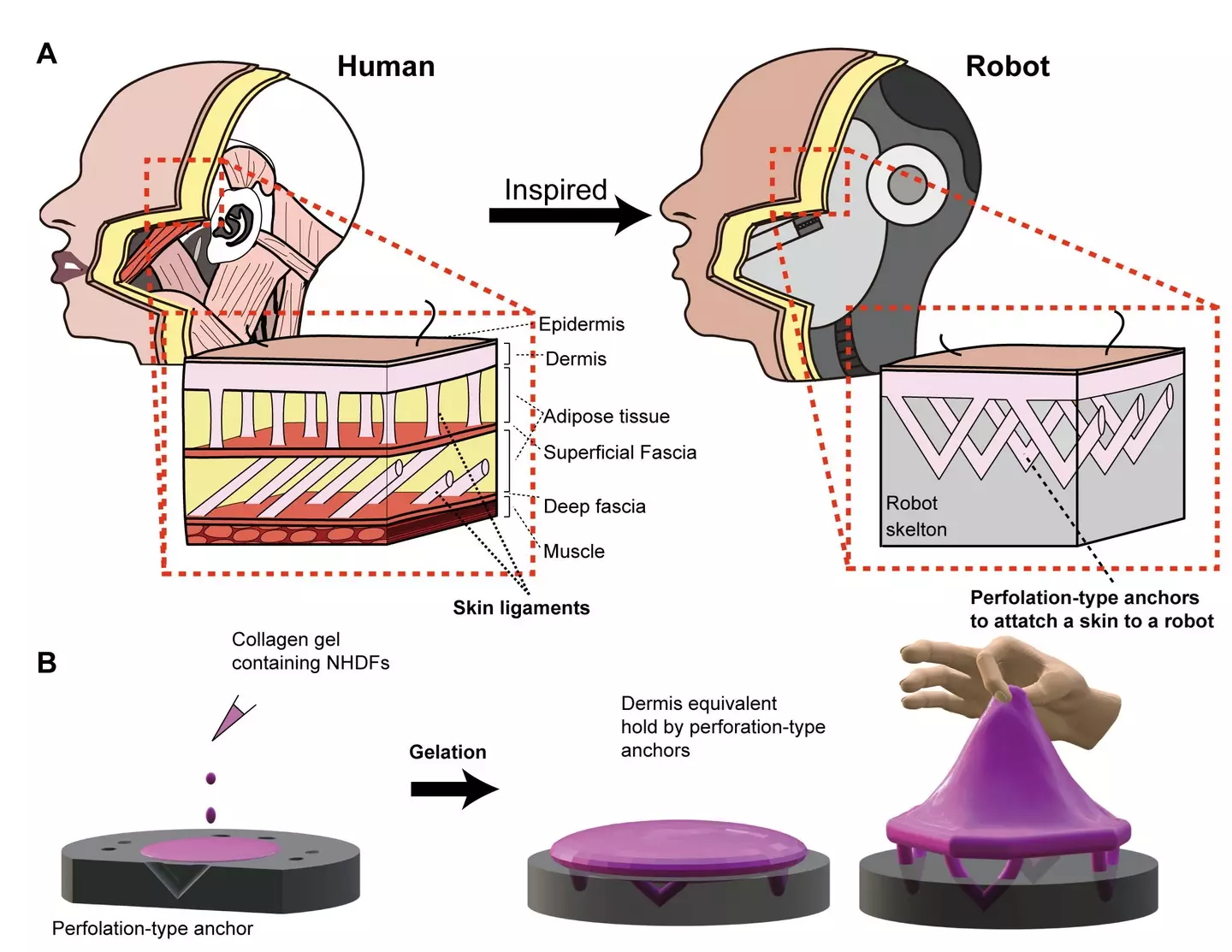Surely this belongs in a movie?
Robots just became even more advanced, after scientists figured out how to create lab-grown ‘human skin’.
Researchers in Tokyo have discovered a way of creating human-like skin tissue and using it on robots.
A team of scientists, led by Professor Shoji Takeuchi from the University of Tokyo, have been able to cover a robot’s face with a thin layer of human-like skin.
It was created by the team at the university, and made from a mixture of human skin cells layered on top of a resin base.

Researchers have created human-like skin. (Takeuchi et al 2024/SWNS)
“This living skin would be particularly useful for robots that interact closely with humans, such as health care, service, companion and humanoid robots, where human-like functions are needed,” Professor Takeuchi told the Times.
“The skin can repair itself if damaged, similar to how human skin heals wounds. And integrating sensory functions like touch and temperature detection is more feasible with living tissue.”
So how did they manage to create the human-like skin?
Takeuchi explained that the dermal cells were created first, followed by epidermal cells.
The thin layer of skin – which is capable of healing itself – was then attached to a robot’s face via perforations within the resin.
These perforations resemble ligaments that lie beneath the skin in both humans and animals.

The skin can be layered on a robot’s face. (Takeuchi et al 2024/SWNS)
The team then used a collagen gel which filled the perforations, essentially acting as an adhesion between the ‘skin’ and the resin base.
“It creates a smooth, strong bond between the skin and the robot,” said Takeuchi.
“The natural flexibility of the skin and the strong method of adhesion mean the skin can move with the mechanical components of the robot without tearing or peeling away.”
But there are some limitations with the process, such as maintaining a sterile environment and avoiding infection.
“Manipulating soft, wet biological tissues during the development process is much harder than people outside the field might think. For instance, if sterility is not maintained, bacteria can enter and the tissue will die,” Takeuchi added.
“However, now that we can do this, living skin can bring a range of new abilities to robots.
“Self-healing is a big deal – some chemical-based materials can be made to heal themselves, but they require triggers such as heat, pressure or other signals, and they also do not proliferate like cells.

Takeuchi believes that even more realistic skin can be created with the addition of glands, pores, blood vessels and fat. (Takeuchi et al 2024/SWNS)
“Biological skin repairs minor lacerations as ours does, and nerves and other skin organs can be added for use in sensing and so on.”
Professor Takeuchi believes the development could help in a number of different areas of medical research, including skin aging, cosmetics, surgical procedures and plastic surgery.
He also believes that an even more realistic skin layer can be created by incorporating ‘sweat glands, sebaceous glands, pores, blood vessels, fat and nerves’.
“Of course, movement is also a crucial factor, not just the material, so another important challenge is creating humanlike expressions by integrating sophisticated actuators, or muscles, inside the robot,” he added.
“Creating robots that can heal themselves, sense their environment more accurately and perform tasks with human-like dexterity is incredibly motivating.”
Featured Image Credit: Takeuchi et al 2024/SWNS


